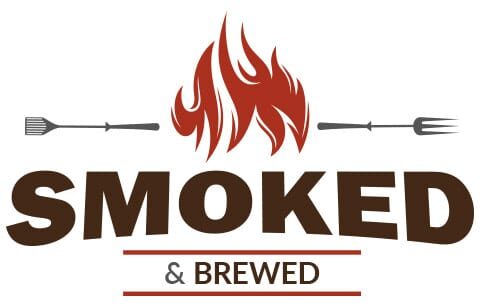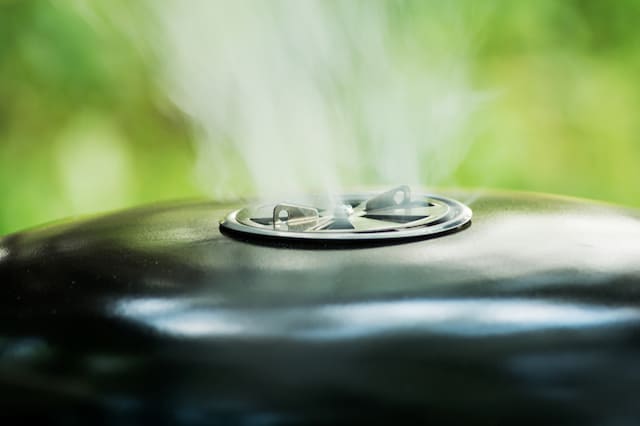Given the popularity and effectiveness of more traditional smoking fuels, it seems only natural that some smokers would be skeptical of wood pellets. It’s understandable. After all, people have cooked meat over burning logs for thousands of years, producing delicious meat with a rich, smoky flavor. And, while it is proven that using pellets is more efficient and cost-effective than traditional smoking methods, the only question that matters for any serious pitmaster at the end of the day is, “Do they taste good?”
In general, the smoke produced by pellets is a little milder in flavor than the smoke produced by logs or charcoal. However, factors such as lower smoking temperatures, longer cooking times, bold wood flavors, and a high-quality smoker help to achieve a better smoke flavor with pellets.
So, pellet smoke doesn’t quite measure up to the intensity of smoke produced by more traditional smoking fuels. But there are still good reasons to go with pellets over logs, wood chips, and charcoal. And, with a little effort, pellets can give you that deep, smokey flavor you’re after.
Pellets Vs.Traditional Fuels: Which Has the Best Smoke Flavor
Unlike logs or wood chips, pellets are a manufactured product made from compressed sawdust. Each pellet is the same size and weight. This ensures that pellets ignite at the same temperature and burn at the same rate, resulting in a more consistent and reliable heat than traditional smoking fuels.
Smoking with logs or wood chips can often be a frustrating guessing game, requiring the smoker’s undivided attention. But with pellets, once you find your ideal temperature, you can set your smoker and forget it, assured with each smoking session that the pellets will react the same way.
Pellets are also engineered to burn cleaner and produce less ash than other fuels. This clean burn is great for consistent, even heat, but clean burns also mean less smoke. This is where many old-school pitmasters argue that traditional wood is worth the headache because there are simply no shortcuts when it comes to getting that deep, rich smoke flavor into your meat.
But I believe in working smarter, not harder. And there are ways to get that sought-after smoke flavor without having to babysit your smoker.
How to Get the Best Smoke Flavor Out of Your Pellets
1. Purchase Quality Pellets
When purchasing pellets, ideally, you want pellets that contain 100% sawdust. Low-quality, cheap pellets will contain filler, such as tree bark or other less-than-ideal materials that are tossed in during manufacturing. This unwanted filler not only lowers the burn time and consistency of your pellets, but too much of it can also negatively impact the flavor of your smoke.
Go with high-quality pellets instead. The price will be a little steeper, but the quality of smoke will be noticeably better. Also, because higher-quality pellets burn longer, you’ll end up using less of them than you would cheaper pellets, so the price will even out.
2. Go With Bolder Woods
Milder woods, like fruit woods or oak, are great for imparting more subtle flavors into your meat. But, because pellet smoke is already on the milder side, it’s better to use wood that produces bold-flavored smoke.
Mesquite and hickory are two great choices that shouldn’t be hard to come by. Hickory is better suited for pork, while mesquite pairs well with beef and chicken.
3. Low and Slow
The longer you leave your meat in the smoker, the more the meat will absorb the flavor of the smoke. But smoking for longer doesn’t mean you should simply leave the meat in the smoker for an extra hour or two. To avoid overcooking or drying out your meat, you’ll need to lower the heat of the smoker.
225 degrees Fahrenheit is a good temperature to aim for. Keep your smoker at this temperature until the internal temperature of your meat reaches 135 Fahrenheit. At that temperature, the meat will stop absorbing the smoke. Then, you can gradually increase the temperature until the meat is cooked through.
4. Indirect Heat
One key to ensuring a good smoke flavor, no matter the fuel, is keeping your meat from cooking too quickly. Placing your meat directly over the heat source of your smoker will result in tough, overcooked, meat without much flavor.
When putting your meat in your pellet smoker, make sure to place it at least a couple of racks up from the bottom. Also, position the meat off-center, if at all possible. This way, the meat will be cooked with indirect heat. Indirect heat takes longer to cook, allowing your meat more time to absorb that delicious smoke.
5. Watch Your Smoke
To ensure that you’re getting the most flavor out of your pellet smoker, watch the color of the smoke as it rises from the chimney. White smoke means the wood is burning a little too clean, resulting in a milder flavor. Black smoke means the opposite, and will potentially make your meat sooty and bitter. What you want is a light grey, almost blue smoke. By making small adjustments to the number of pellets and cook temperature, you’ll get the color you’re looking for.
6. Use Cold Meat
As I mentioned above, the more time your meat spends in the smoker, the more flavor you’ll get. Starting your meat cold means it will take that much longer for the meat to reach the desired internal temperature, absorbing more of that good smoke flavor in the process.
But don’t start your meat frozen. While it may seem like a good idea, frozen meat will cook unevenly. Storing your meat in the fridge or the cooler beforehand works fine.
7. Keep the Smoker Closed
One mistake I often see new smokers make is continually opening their pellet smoker while their meat is smoking. Keep your smoker closed! Every time you open the door to your pellet smoker, you’re letting out precious smoke. I know it’s tempting to want to check up on your meat but trust your instruments. If you’ve gauged the weight of your meat correctly, you’ll know how long it will take before it’s ready.
8. Trim the Fat
Of course, fat content is essential for making delicious, succulent barbecue. But too much fat can prevent smoke from absorbing into the meat. If you buy a piece of brisket or a pork shoulder with a thick layer of fat on the outside, trim it so that only a thin layer remains. This will allow the smoke to penetrate the meat. But don’t go crazy; fat is flavor, after all. When trimming, 80% meat to 20% fat is a good ratio to aim for.
9. Choose a Quality Smoker
A craftsman is only as good as his tools. If you want to get the most out of your wood pellets, your equipment has to be reliable. Don’t purchase just any old pellet smoker. Do your research and make sure the smoker you choose is of a trusted brand and the highest quality possible. I’m not saying you have to break the bank. The following are a few trusted pellet smoker manufacturers who offer smokers ranging in price from entry-level to professional-grade:
- Yoder Smokers
- Memphis Grills
- Traeger
- Weber
- Cookshack
Scot has loved smoking food in his free time for the last few years. Each major holiday or off-weekend, Scot spends days testing and prepping new recipes for perfection.

